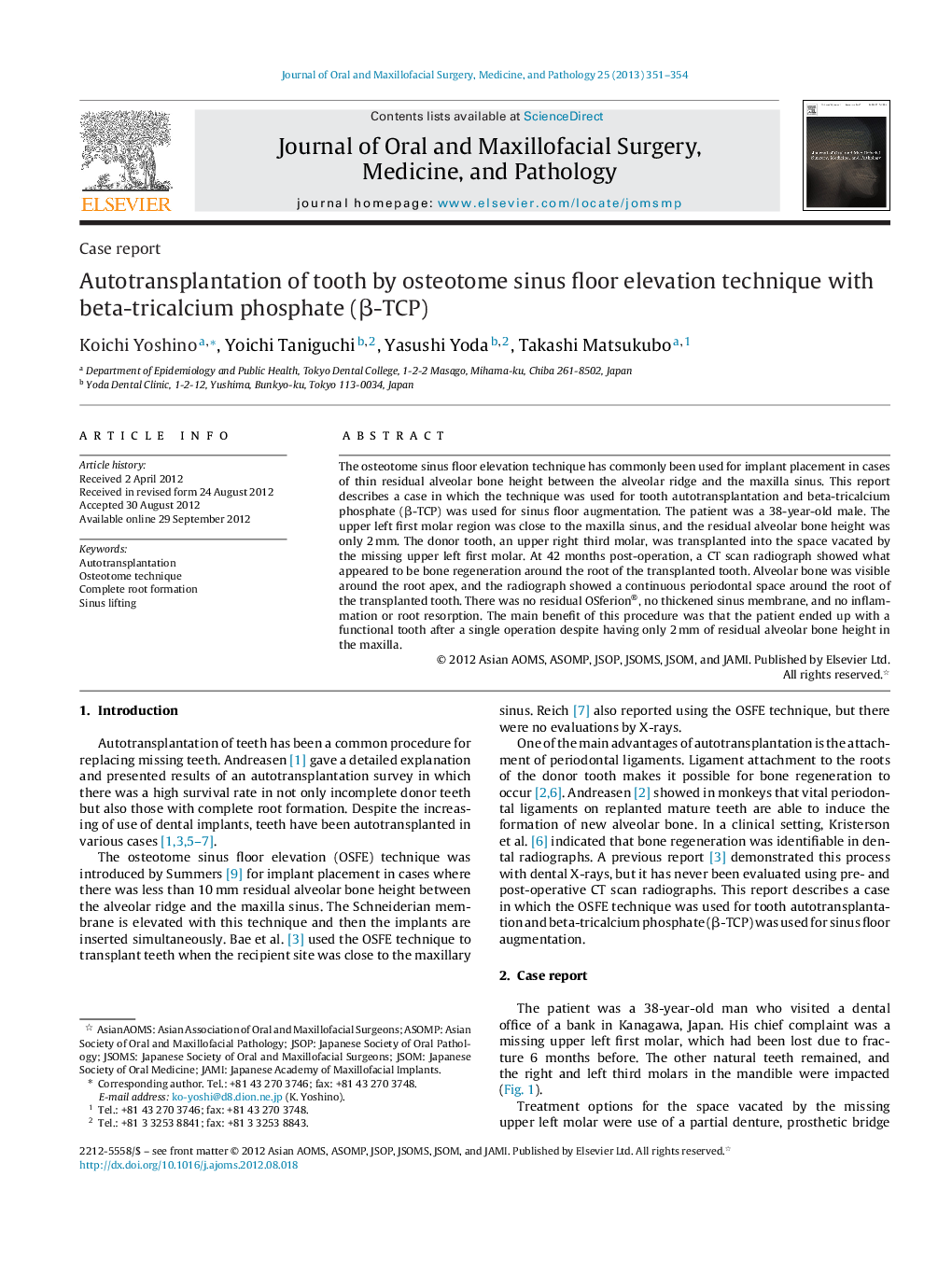| Article ID | Journal | Published Year | Pages | File Type |
|---|---|---|---|---|
| 3159884 | Journal of Oral and Maxillofacial Surgery, Medicine, and Pathology | 2013 | 4 Pages |
Abstract
The osteotome sinus floor elevation technique has commonly been used for implant placement in cases of thin residual alveolar bone height between the alveolar ridge and the maxilla sinus. This report describes a case in which the technique was used for tooth autotransplantation and beta-tricalcium phosphate (β-TCP) was used for sinus floor augmentation. The patient was a 38-year-old male. The upper left first molar region was close to the maxilla sinus, and the residual alveolar bone height was only 2 mm. The donor tooth, an upper right third molar, was transplanted into the space vacated by the missing upper left first molar. At 42 months post-operation, a CT scan radiograph showed what appeared to be bone regeneration around the root of the transplanted tooth. Alveolar bone was visible around the root apex, and the radiograph showed a continuous periodontal space around the root of the transplanted tooth. There was no residual OSferion®, no thickened sinus membrane, and no inflammation or root resorption. The main benefit of this procedure was that the patient ended up with a functional tooth after a single operation despite having only 2 mm of residual alveolar bone height in the maxilla.
Related Topics
Health Sciences
Medicine and Dentistry
Dentistry, Oral Surgery and Medicine
Authors
Koichi Yoshino, Yoichi Taniguchi, Yasushi Yoda, Takashi Matsukubo,
